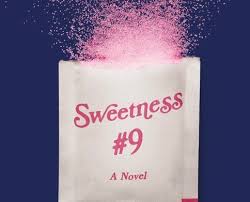The Art of Juxtaposition: Visual Storytelling with Stephan Eirik Clark
 In a recent lecture at City University of Hong Kong MFA Program, Sweetness #9 author, Stephan Eirik Clark described how writers can borrow cinematic visual storytelling methods to enhance their prose. He illustrated his thesis, using scripts from two films from the year 1985, Witness with Harrison Ford and Rambo II with Sylvester Stallone. By using the later as a counterpoint, Clark showed the difference between image-driven storytelling and Tweedledee and Tweedledumb driven pulp:
In a recent lecture at City University of Hong Kong MFA Program, Sweetness #9 author, Stephan Eirik Clark described how writers can borrow cinematic visual storytelling methods to enhance their prose. He illustrated his thesis, using scripts from two films from the year 1985, Witness with Harrison Ford and Rambo II with Sylvester Stallone. By using the later as a counterpoint, Clark showed the difference between image-driven storytelling and Tweedledee and Tweedledumb driven pulp:
Co: How you get into this?
Rambo: It’s a long story.
Co: Long ride.
Rambo: Well… after I left Special Forces, I… moved around a lot.
A hollow tale requiring noise and flurry to mesmerize the audience, Rambo II (script by Sylvester Stallone) brims with expository, dime novel dialogue. Arguably, an audience needs somebody to transmute smoke and fire into counterfactual meaning and wishful thinking. In contrast, Witness is a master class in image driven storytelling, showing exposition—not telling: A case in point from the script’s camera directions:
“A huge tractor trailer rig hovers over the frail buggy as it trots down the interstate. The camera cranes up to reveal a procession of vehicles behind the truck waiting for a chance to overtake it†(Witness, 12B).
In a beat, the audience sees conflict, a clash of cultures, a war neither side can win. Expressing this in dialogue would adulterate the story. However, this juxtaposition of films raises the question: What would Sylvester Stallone’s character say to the Amish heroine if he were to be wormholed from Rambo II into this other universe of Witness?
Rachel: Why did you leave Philadelphia?
Rambo: I… came here to protect you.
Rachel: Protection from who?
Rambo: The same kind of people who sent me to Viet Nam.